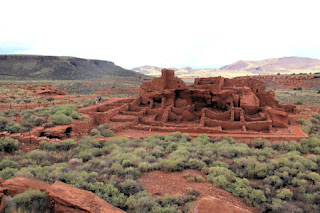One
of my current projects is Not the Enemy, a story about a German American
girl living in Illinois during World War I. For various reasons, I gave her a
grandmother who refuses to speak English, but that raises a serious issue.
Should I include her German dialogue in the story, and, if so, how can I make
sure my readers understand it?
For this book, I decided that my
protagonist would understand German but be just as stubborn about speaking
English as her grandmother is about speaking German. So when Grossmutter says “Bitte
bringen Du mir ene Tasse Tee,” Kate answers in English with “One cup of tea
coming up.”1 Although that doesn’t give my readers an exact
translation of what Grossmutter said, it does give them the essence.
There are other ways of conveying
foreign language dialogue to the reader, of course. At times, I simply use the
English and mention that Grossmutter said it in German. This can also be a
successful technique.
I have a critique partner who sets
her books in Africa. Most of Celeste’s main characters are American or English,
and some of the African characters have learned English in school or picked it
up from the English-speaking people they associate with. But there are others
who only speak African dialects. Although Celeste bases her locations on the
real African countries where she worked as a missionary, she has chosen to fictionalize
them by giving them different names and languages. Although she limits herself
to English, she must clue the reader in that the original words are said in
another language. In the series I am critiquing for her now, she has a
character who knows enough languages to act as interpreter, so Hannah tells her
English-speaking colleagues (and the reader as well) what is being said. Celeste
makes it clear, however, that the words are being interpreted. For example, “Raymond
told Hannah, ‘Tell the children that we aren’t going to hurt them.’ Nodding,
Hannah used the children’s language to repeat what Raymond had said.” (That’s
not an actual quote but gives you an idea of how Celeste does it.)
Then there is the use of foreign
language phrases without any attempt to translate but yet in a context that
makes them flow seamlessly with the story. I just finished reading When We
Were Widows by Annette Chavez Macias. Her main characters are Mexican
Americans, and the story is sprinkled with Mexican words and phrases. I
remember very little of the Spanish I learned in my freshman year of high
school, and I have no idea how to translate the phrases used by the characters.
Still, there was enough context so that I could get the gist, or at least the
tone, of the words. Yes, there were times when I wished I had the translation,
but not knowing it didn’t frustrate me or interrupt the story. That’s the trick
of writing that way, and it’s not easy to do.
This is not the first time I’ve faced
the issue. My first middle-grade book, Desert Jewels, was about a half
Japanese American girl living on the west coast during World War II. She spoke
English and knew very little Japanese, but to make it realistic, I gave her an
aunt and uncle who came from Japan and had never learned English. Unlike Kate’s
grandmother in Not the Enemy, however, the aunt and uncle played a very
minor role in the book and had children who could translate for my protagonist’s
(and my readers’) benefit. Even so, I put some Japanese words and phrases in a
glossary at the end of the book.
I wish I had remembered that when I
wrote Not the Enemy. Although my beta readers got what they needed from my
protagonist’s thoughts and the context clues I included, half of them suggested
putting a glossary of German words and phrases at the back of the book. A very
good suggestion, and one I should have thought of myself.
The main thing about using foreign
languages in novels is to make sure you don’t slow down the story or frustrate
your readers. And, of course, it should never be an excuse for showing off. Whether
the language is translated or not, its use must be natural to the characters
and the situation.
Using foreign languages in a novel should
enhance the story. If they frustrate the reader or slow the story down, leave
them out.
__________
1 My German is pretty rusty, so I’m
still working on making sure it is correct. If that phrase is wrong, it will be
right by the time I finish my final draft.
__________
The
1917 photo at the top of this blog comes from the Chicago Daily News. It
shows a group of children standing in front of a sign at Edison Park in
Chicago. The sign reads, “DANGER!! TO PRO-GERMANS.—LOYAL AMERICANS WELCOME TO
EDISON PARK.” The photo is in the public domain because of its age.










